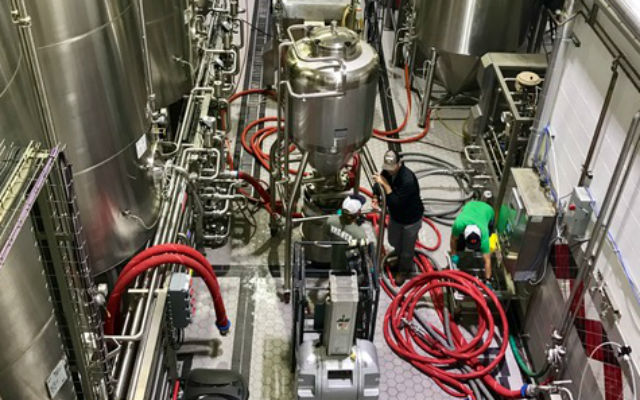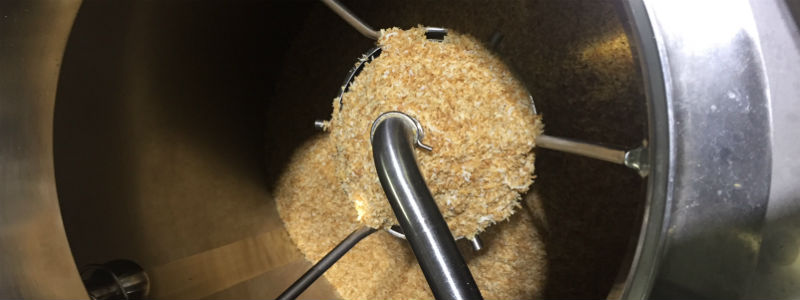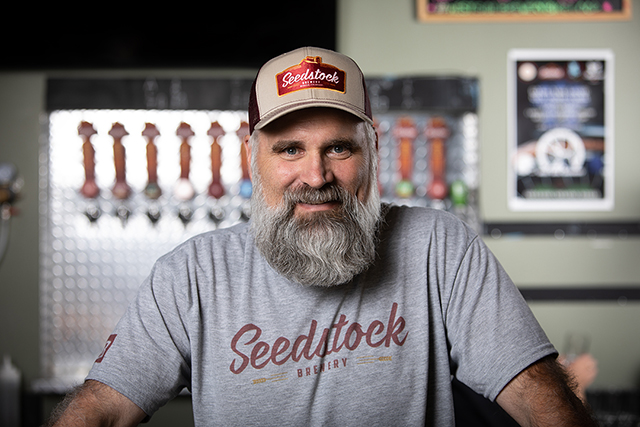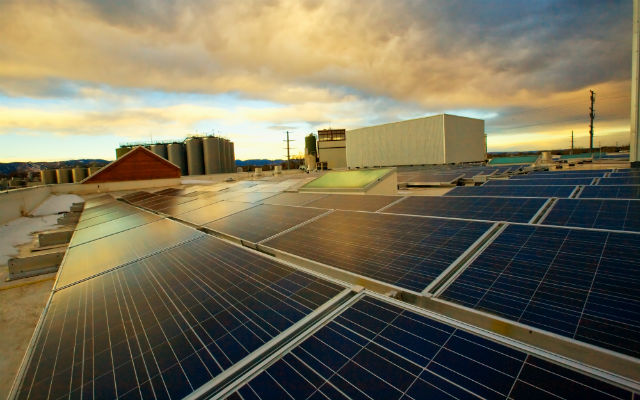
Improving efficiency in any aspect of a brew day can save time, and money, either in labor or raw materials. For Avery Brewing, the development of a new piece of equipment has lent itself to better production of beers with adjuncts, such as coffee, orange peel, coconut and spices.
By adding what they call ‘Sputnik’, Avery is able to get a more efficient extraction of whatever flavors and aromas they’re looking for out of the adjunct. What used to take 7-plus days is now done anywhere between a matter of hours or a couple of days, reducing the labor the brewery need to devote to these beers and freeing up tank space for more production.
In addition to the increased efficiency, the brew team has found that they are getting cleaner, more vibrant flavors and aromas out of the adjuncts by having more control over the extraction by using the vessel, which was designed by Dan Strevey, the Process Analyst for Avery, with one of the representatives from Mueller, said Avery Cellar Manager John Olson.
Rather than putting some spices or fruit peel in a nylon bag and soaking beer on that bag for a week or more, brewers can taste the beer throughout our re-circulation process and control the flavor and aroma character they’re extracting by adjusting flow rates, available surface area for contact with beer, and the overall contact time.
Brewer spoke with Olson about what they dubbed ‘Sputnik’ and how it came to be an innovation creation in the Avery brewhouse.
BREWER: Where did the idea for this come from?
OLSON: The “original” vessel of this type that I was aware of personally is the Torpedo that Sierra Nevada designed and uses for their dry hopping process. It is a tall, cylindrical vessel that they add hops to and then recirculate beer through in order to extract dry hop character. We didn’t necessarily base it off of that alone, but the fact that Sierra Nevada has been so successful with those vessels and since we’ve seen other breweries doing similar things with similar vessels and adjuncts, we wanted to get something similar in-house in order to optimize our processes. There are several vessels around the brewing world that accomplish similar things, we just happen to be able to use ours with A LOT of different adjuncts in order to extract a lot of different flavors and aromas.
BREWER: Has it been primarily used for small batch creations and what sort of capacity can you run through it?
OLSON: We have used it for both small and large batch sizes. Generally, we start small when a beer is still in its test/ideation phase in order to determine what we want the final production size batch to be like. Once we have that dialed in, to the best of our ability, we can really make the batches as large as we want. We can only fit so much beer into one tank, but we can always make multiple tanks and use Sputnik for as many tanks as we need, it will just take more time. Same goes with capacity, we can run as much beer through it as we want. We can either recirculate beer through it or run a continuous stream of beer through Sputnik coming from one tank and going into another tank (we generally do this with our really large batches that go into our big tanks, for example, with The Real Peel IPA). Whether we go with A or B is mostly determined by the adjunct and how quickly we can extract the flavor/aroma we are looking for.
For example, when we fill Sputnik to its max with coconut flakes to make Coconut Porter, we can extract all of the flavor from one coconut addition in two hours, but we have to load Sputnik several times to get the flavor we need for a full tank. Coconut Porter takes multiple days with Sputnik for loading, recirculating, emptying, loading again, recirculating again, emptying again, loading again, so on and so forth. However, without Sputnik, it would take even longer to get the coconut flavor infused into the beer and would likely add off flavors to the beer due to the oil content of coconut. With the tangerine peel used for Real Peel, we run beer through it continuously and we can dose 600 bbls in 10 hours and we’re done. So the type of adjunct kind of dictates our capacity and/or overall time more than anything else.
BREWER: How has Sputnik helped the brew team create even more experimentation in what Avery can add to a beer?
OLSON: While this might not be the coolest answer, I’ll actually say that I don’t think Sputnik has helped the brew team create more experimental beers — but I mean that in a good way — the cool thing about working at Avery is that equipment has never stopped (and will never stop) us from making an experimental beer. If someone has the idea and we want to make the beer, we’ll find a way, or at least go to the very last possible option before we deem it “impossible.” However, I will say that Sputnik has made it possible for us to make these experimental beers into national brands and I don’t think they’d be quite as good without Sputnik. I think we would’ve made Coconut Porter, The Real Peel IPA, etc. no matter what, but we probably wouldn’t have made 500 bbls at a time without Sputnik. So … this vessel for us is all about efficiency and about making a better beer.





Be the first to comment